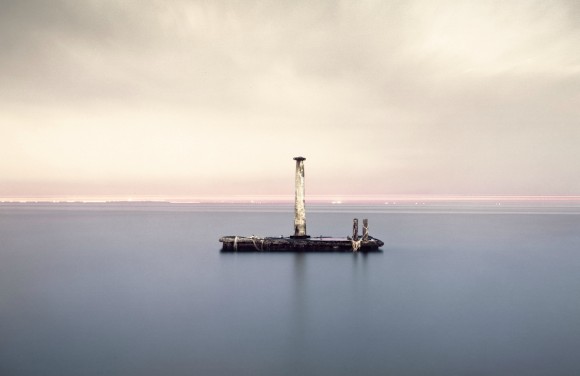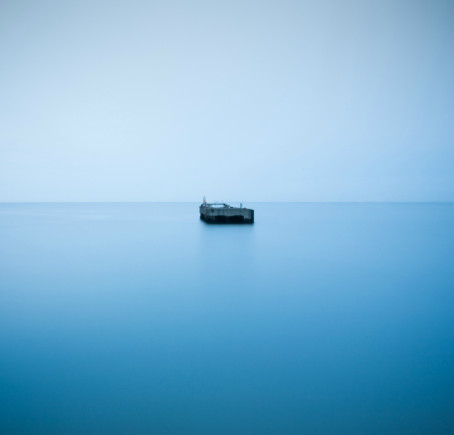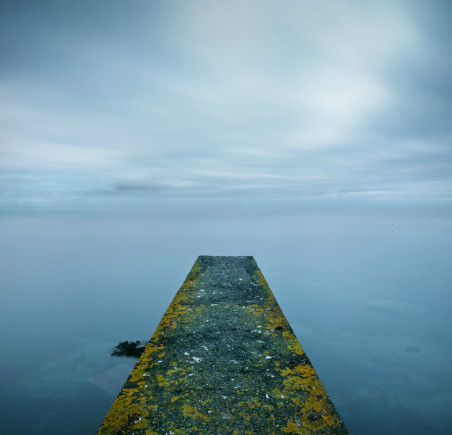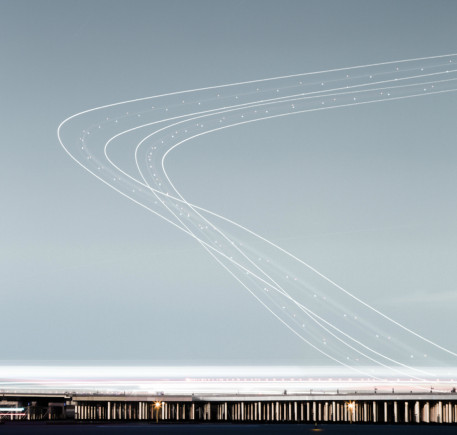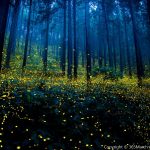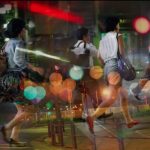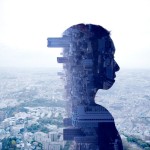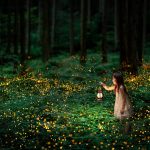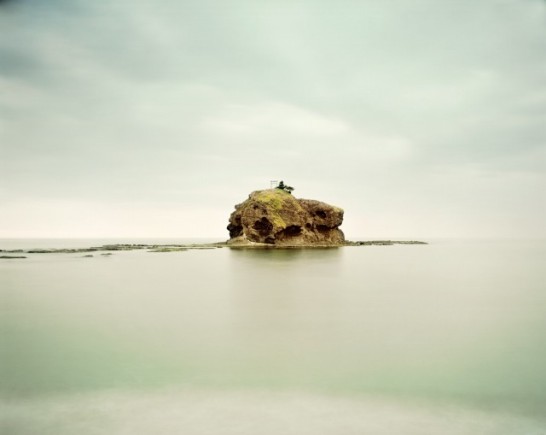 all images courtesy Yoi Kawakubo | click to enlarge
all images courtesy Yoi Kawakubo | click to enlarge
The waterfront is an intriguing place. It represents the boundary between land, where we live, and the sea, where we cannot.
The waterfront is an intriguing place. It represents the boundary between land, where we live, and the sea, where we cannot. And despite supporting the greatest ecosystem on the planet, in one sweeping swell it can simultaneously wipe out all life in its way.
Japanese photographer Yoi Kawakubo’s series “The Waterfront” was shot in 2009, well in advance of the March 11th disasters of 2011 . Today, the crisp, calming images are seen in new light; after a real-life disaster and in a new exhibition at hpgrp’s gallery in Tokyo (through April 12th, 2012).
Kawakubo, who was born in Spain and didn’t return to Japan until he was 18 for college, also sees the waterfront as an important delineator of global boundaries. Dockside areas and industrial zones are subject to rapid change, unlike the sea, which remains constant. And it is at the waterfront where the distortion created between the flow of time comes together. Kawakubo went to many lengths to capture that eerie sense of time. His photos were shot under twilight and are the result of many trial-and-error shutter speeds. As it turns out, Kawakubo says, 151 seconds (coincidentally, a palindromic prime number) was the exact amount of light exposure he needed to capture the metaphysical waterfront.

